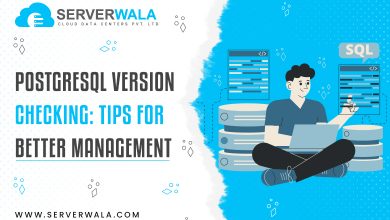What is the difference between Docker Vs. Docker Container?

Introduction
In the realm of containerization, installing Docker has emerged as a leading technology that has reengineered the way applications are designed, deployed, and administered. To grasp the nuances of Docker fully, it is essential to distinguish between Docker as a platform and Docker container as the building blocks of this platform. This blog post will delve into the disparity between Docker vs. Docker Container, shedding light on their respective definitions and roles within the Docker ecosystem. Let’s begin with apprehending what Docker is before we move on to discussing further things.
What is Docker?
Docker refers to an open-source platform that renders a comprehensive range of tools as well as services for creating, distributing, and operating applications within containers. It permits developers to package their applications accompanied by their dependencies into portable & lightweight containers, ensuring consistency across various computing environments. Docker leverages containerization technology to offer efficient isolation and resource utilization, making it easier to deploy applications across different systems.
What is a Docker Container?
A Docker container is a light and standalone implementable unit that incorporates an application as well as its dependencies, containing libraries, runtime, and system tools. It is an instance of an image, which serves as a blueprint for creating multiple containers. Docker containers utilize the host operating system’s kernel, ensuring a higher level of efficiency and performance compared to traditional virtualization. Every container is independent of other containers and shares the host machine’s operating system resources, making them highly portable and scalable.
What is Docker Engine?
Docker Engine, also called the Docker runtime, is the core element of the Docker platform responsible for constructing and handling Docker containers. It consists of three key elements: the Docker daemon, the Docker API, & the Docker CLI. The Docker daemon, running on the host machine, handles container creation, distribution, and execution. The Docker API renders a RESTful interface for interacting with the Docker daemon programmatically, while the Docker CLI offers a command-line interface for users to interact with Docker.
What is Docker Image?
A Docker image refers to a read-only template that acts as a blueprint for creating Docker containers. It consists of the runtime, application code, dependencies, system tools, and libraries needed to operate the application. Docker images are built from instructions written in a Dockerfile, which defines the steps to be executed to create the image. Images can be kept and shared in Docker registries, allowing for easy distribution and reuse.
What is Docker Registry?
A Docker registry is a repository that keeps Docker images, permitting users to share and distribute their images across different environments. The Docker Hub is the default public registry provided by Docker, hosting a diverse collection of pre-built images created by the Docker community. Additionally, users can set up their private registries to store proprietary or custom-built images, ensuring greater control over their image distribution.
Also Read: How to Check CPU Usage or Utilization in Linux/Ubuntu?
What is Docker Architecture?
Docker’s architecture follows a client-server model that enables users to interact with Docker resources and manage containers efficiently. Apprehending the principal elements of Docker’s architecture is essential for comprehending how Docker operates.
At the core of Docker’s architecture is the Docker daemon, also recognized as the Docker engine. The Docker daemon takes charge of the creation, execution, and management of Docker containers. It runs as a background procedure on the host machine and listens for instructions from the Docker client.
The Docker client serves as the interface for users to engage with Docker. It can act as a command-line interface (CLI), a graphical user interface (GUI), or a programmatic API. Users issue commands and provide instructions to the Docker daemon through the client, allowing them to manage various aspects of Docker, such as creating and running containers, building images, and managing networks and volumes.
The Docker daemon and the Docker client communicate through a RESTful API. The Docker API defines a set of HTTP endpoints that the client can access to engage with the Docker daemon programmatically. This API provides a standardized way for users and applications to control Docker resources.
When a user issues a command through the Docker client, the client sends the corresponding API request to the Docker daemon. The Docker daemon acquires the request, interprets it, and takes the necessary actions. This can include tasks such as pulling images from a registry, creating containers, allocating resources, managing networks, and monitoring container health.
The Docker daemon manages the entire lifecycle of containers, including their creation, execution, and termination. It handles container isolation, resource allocation, and networking configuration. It ensures that containers are isolated from one another and share the host machine’s resources efficiently.
Difference between Docker vs. Docker Container?
Docker and Docker containers are closely related but have distinct roles within the Docker ecosystem. Apprehending the distinction between them is critical for grasping the full capabilities of Docker and its containerization approach.
Docker: Docker refers to the comprehensive platform that encompasses various components, tools, and services for containerization. It provides a robust infrastructure and framework that enables developers and system administrators to construct, distribute, and manage applications within containers. Docker consists of the Docker Engine, Docker images, Docker registries, and other supporting tools.
Docker Engine is the core runtime element of Docker responsible for constructing and administering containers. It leverages the host operating system’s kernel to efficiently run containers while ensuring isolation between them. The Docker Engine consists of the Docker daemon, which manages container execution and resource allocation, the Docker API for programmatic interaction with the daemon, and the Docker CLI, which provides a command-line interface for users to interact with Docker.
Docker Containers: Docker containers, on the other hand, are the actual instances created from Docker images. They are light-weight, independent, and self-contained runtime environments that encapsulate an application and its dependencies. Containers leverage the Docker platform, including the Docker Engine, to provide consistent and portable execution environments across different systems.
Containers offer numerous benefits, such as resource efficiency, scalability, and ease of deployment. They enable applications to operate continuously across diverse computing environments. Containers ensure that applications and their dependencies are packaged together, eliminating issues caused by differences in underlying infrastructure or configuration.
Docker vs. Docker Containers: Key Differences
To highlight the key differences between Docker vs. Docker Containers, the following table provides a concise overview:
| Docker | Docker Container | |
| Role | Comprehensive platform | Runnable instance created from Docker images |
| Purpose | Provides infrastructure and tools for containerization | Represents a self-contained and isolated application runtime |
| Components | Docker Engine, Docker images, Docker registries, etc. | Constructed from Docker images and run by Docker Engine |
| Functionality | Builds, distributes, and manages applications under containers | Executes and runs applications in isolated environments |
| Benefits | Consistent development and deployment environment | Lightweight, portable, and scalable runtime environment |
| Interaction | Interacts with Docker Engine through CLI or API | Runs and manages by Docker Engine based on instructions in images |
| Relationship | Docker permits the creation and administration of containers | Containers utilize Docker’s platform for consistent runtime environments |
Also Read: How to Format a Disk in Linux/Ubuntu OS?
Conclusion
Docker and Docker containers are interconnected but distinct concepts within the Docker ecosystem. It serves as the comprehensive platform that enables containerization, providing the necessary tools and services, including the Docker Engine, images, and registries. Docker container, on the other hand, is the tangible entity that encapsulates applications and their dependencies, leveraging Docker’s platform to deliver portable, isolated, and scalable runtime environments.
Apprehending the distinction between Docker vs. Docker Containers is significant for enjoying the complete Docker.’s potential This lets you further reap the benefits of modern application development and deployment practices.




